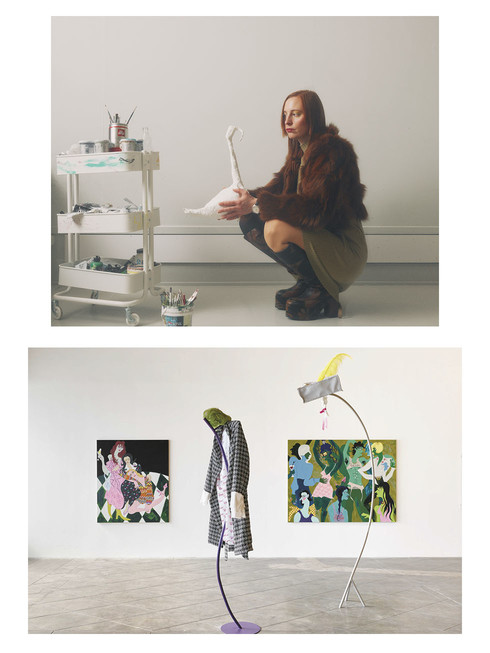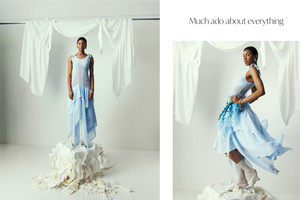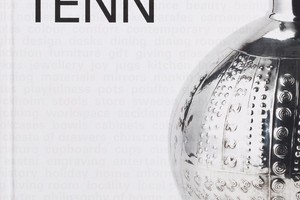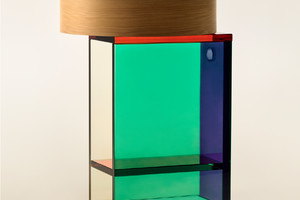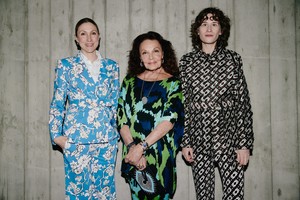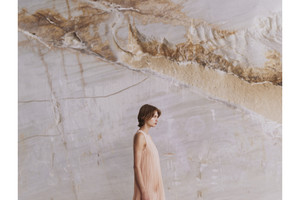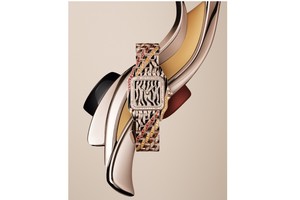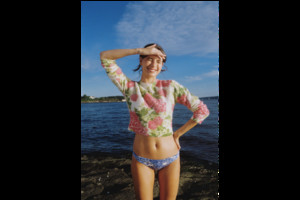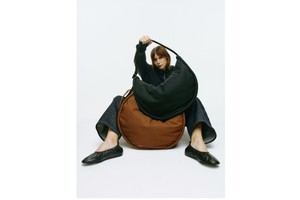Bateau Rouge, An Interview with Constance Tenvik
Written by Astrid Birnbaum by Sandra MyhrbergCelebrated for her mastery across performance, textile, sculpture, costume, painting, and drawing, Constance Tenvik stands as a visionary artist, crafting immersive installations that resonate globally. The upcoming exhibition at The Munch Museum in Oslo will no doubt elevate Tenvik to new heights. Whether nestled in artist retreats or exploring new countries, she seamlessly transforms each environment into a curated extension of her vibrant creations. In this global artistic journey, Tenvik’s oeuvre un- folds like a sophisticated maximalist, weaving together narratives, colour theories, and ex- aggerated forms that enchant discerning audiences. Drawing inspiration from the tapestry of humanity, dreams, and mythological fragments, her paintings intricately interweave, creating a chromatic collage that transcends conventional boundaries. Tenvik’s artistic allure has graced exhibitions across the world, solidifying her presence as a revered artist whose work resonates with the global artistic conscience.
Astrid Birnbaum: Constance, I would like to begin this interview at the beginning. You are Norwegian but you were born in London in the year of 1990. As a child and teenager - did you surround yourself with creative things?
Constance Tenvik: I was dancing Jazz-ballet four times a week and every other weekend until I was 16. I was also singing in a church choir for two years that I ended up in accidentally. I wanted to give emotional support to my friend by showing up with her to the choir audition. I ended up being in the choir but not her. I actually liked it a lot. I was not a perfectionist about it but I liked being part of it. We had a few concerts in the concert house. The nice thing about a choir is that if you leave while everyone is singing, no one will notice. If two people leave, it’s fine. If three people leave it really makes a difference. It’s not really about you, but you are necessary for the choir. I was a child when I picked up some parts of my dads CD collection that had everything from funk to Mozart’s Requiem. There was always music in the house. As a teenager I tried to find excuses to draw, I liked reading books and I was in a poetry club. I was already writing a diary. I still do, every day. I think a lot of artists have a need of documenting and remembering moments and making them last longer. I have recorded many things in my life - small things like everyday conversations, food, music and interactions.
AB: When growing older you studied art. You went to Yale University School of arts where you did your masters degree. How were your years in art school?
CT: My undergrad experience at the Academy of Art in Oslo gave me a good foundation. I still keep in touch with some of my professors from back then and remember things they shared with me. The Yale experience felt like I was building a vault of my interests. I had access to most courses across all fields, which is incredible. You could go to the biology department if you wanted to - you could go everywhere to learn. My daily route was studio - library - home. That was my little world there. I’d go to the Be inecke library for old manuscripts and I’d go to the HAAS library after studio visits when someone had just mentioned ten new artist names. I could then find a bunch of books about these artists and just flip through it all. Having libraries like that so close and in such an elevated environment - it really helped me build my world of thoughts and references. I am still ruminating over the things I learnt and the academic interests that were formed there. I was in the sculpture department, my studio was messy and full of experiments. I made a lot of things - like a bathtub out of paper mache with a three-breasted monster in it.
AB: What was your first project after art school?
CT: The day after I graduated I took everything I had and went to Kristiansand Kunsthall. For two weeks I prepared an installation and made costumes for everyone who worked there. I was jumping out into the real world. The same summer I went to Basel, Switzerland and did a performance called “Eye of the Tired” where I involved a drummer and a bodybuilder. Martin and Amy from Loyal Gallery in Stockholm were in the audience, and out of that performance, without having seen anything else I had made, they offered me a solo show. I was active and eager and probably absorbing a lot - I wanted to see and do things. Now I have more of a recognisable style than in the beginning. It took me a while to develop a distinguished style. One thing that drove me in the beginning was a curiosity about performance art. I was a child when I saw Matthew Barney’s Cremaster Cycles, a teenager when I saw Tori Wrånes perform, I’ve later participated as a troll in two of her performances and I must’ve been 19 when I saw Marina Abramovic at MOMA, I interviewed her for a Norwegian newspaper a couple of years later. Something staged that had to do with rituals - it was a mysterious thing.
It was incredible to be in Los Angeles - the people, the creative vibe and the sea- son. I felt alive and inspired! The New York show titled “Finding Shelter Under a Giant’s Tongue” was with Harkawik, a gallery in Chinatown. For this show, I did paintings where I reimagined contemporary New York via the lens of Gargantua. Peter Harkawik visited me in Oslo the year before and told me I had to read Gargantua. So I did and became so obsessed that I had to read all five books in Norwegian and English. After reading those, written by François Rabelais, I also had to read Mikhail Bakhtin on Rabelais. Bakhtin points out that Rabelais's humour is humour that today we might find vulgar but might have more meaning than we allow it to give it now. I came to New York, I set up a studio for 3 months - maybe a little more this time. I really tried to restrain myself from not doing portraits and managed to only have two paintings of real people in the show. I focused on creating scenes for the rest of the show because I was so inspired in New York. During the first part, I lived in Little Jamaica and worked in Gowanus. For the second part, I lived in Chinatown and had my studio in Bushwick. Every day, I jumped up and got out on the street, meeting so many people. There is a lot of energy in the printing that I think comes from being in such a stimulating and ambitious place with so many great minds and hearts.
AB: I know you are right now working on a big project in Oslo - the Solo Oslo series. Tell me all about that! You are working in Edvard Munch’s old studio, am I right?
CT: Yes! I am at the fourth out of five exhibitions in this series that the Munch Museum has initiated. I haven’t worked like this since 2018-19. It’s very exciting. One of my favourite things in the world is to make installations but I feel like it is mostly suited to institutional places like Museums and Kunsthallen. More than in galleries. Now that David Zwirner hasn’t offered anything at least. *both laughing* I was supposed to have Edvard Munch’s old studio for the last couple of months before the show but somehow I managed to negotiate a way to have this studio from January to September. So now I have all this space - it’s so nuts. It really is his dream studio, with natural light coming in from the ceiling. I had a proposal to make an installation based on a play by Aristophanes called The Birds. The play is about two humans who are tired of living on Earth. So they go up to the heavens to convince the birds that they have to turn their bird world into an empire. At one point, the birds are the new gods. They are being praised and admired. Also - it’s so much cheaper to make temples out of hay than out of marble. But the gods are being starved by not getting the attention they’re used to getting from the humans, nor their sacrifices. So the gods start a war against the birds. I’m basically looking at humans by comparing birds, humans and gods. I like to take on big themes. Often times I’m centred around questions surrounding the human condition. What we do as humans and our desires. Yet sometimes it’s okay to just live. I think my portrait series is proof that my own investigations and people I meet can become art on their own. But I do also like to attack a bigger theme or something academic. It’s a way to keep growing and to keep being curious. I have a good team with me now at the Munch Museum. I think it will be very up- lifting to do this. I say no to most things these days to focus on this completely. I actually love to just do one thing at a time. Even if this thing involves a lot of elements. I want to transform a room and make it my world.
AB: What are your hopes for 2024? Is there something specific that you are looking forward to?
CT: I am excited to have this headspace. To go into this interest in the theatrical, philosophical, historical and mythological. It’s a great time to geek out. The horizon right now makes me feel dedicated and focused. My diary has been red or blue every other year. The red has always been like go go go – fire mode. The blue ones have been reminders to engage in contemplation. But this year, I have a black calendar. I feel like it’s a monumental year. Let’s see where it goes. I hope I do not get overpowered by my own expectations for this year, but I’m taking it seriously.


